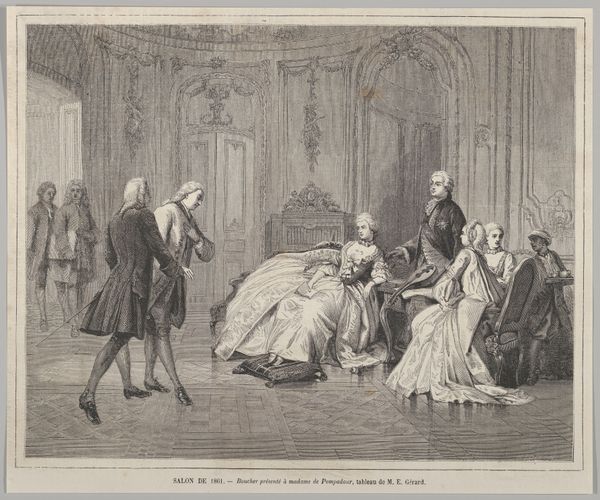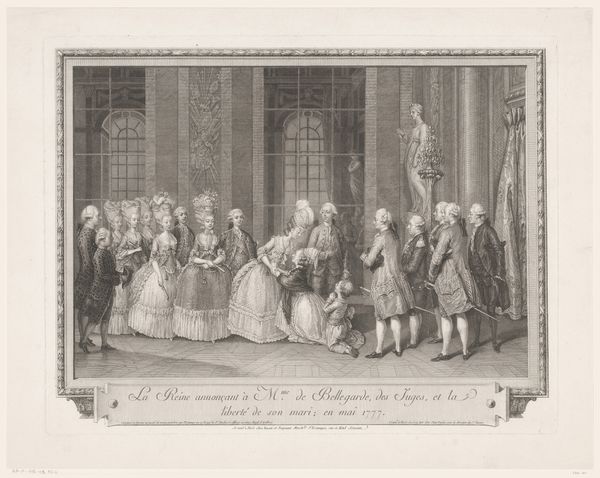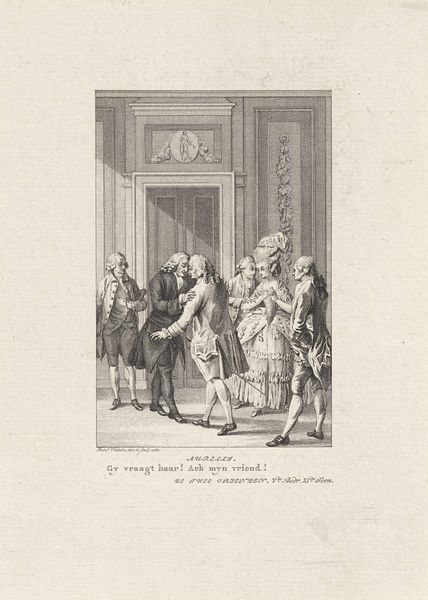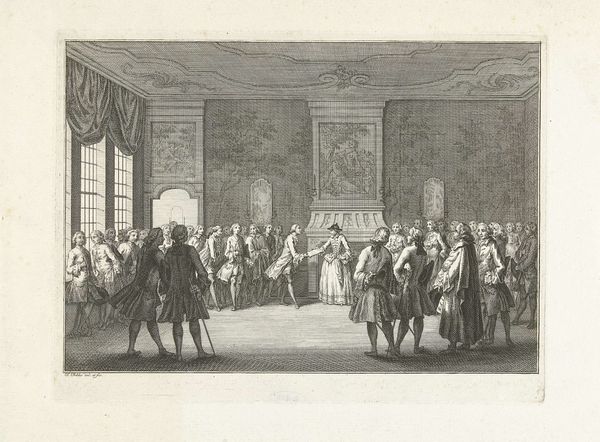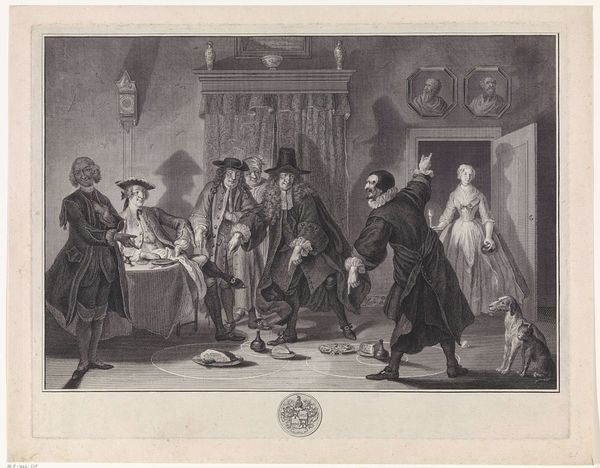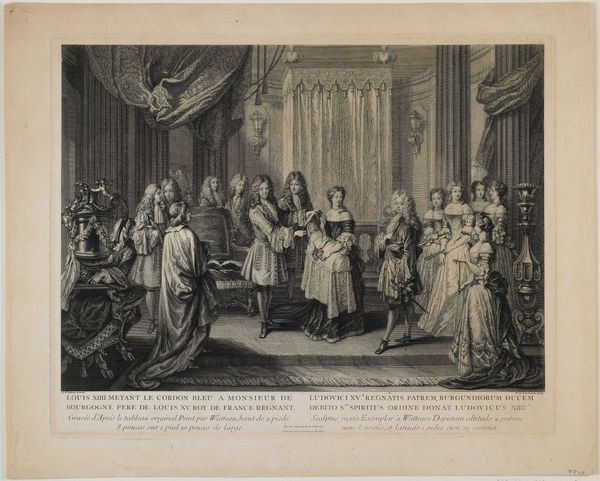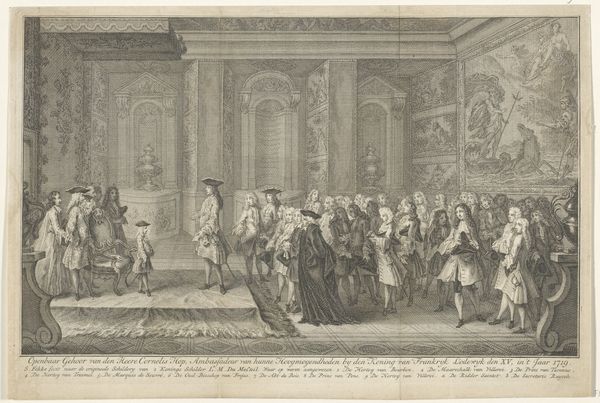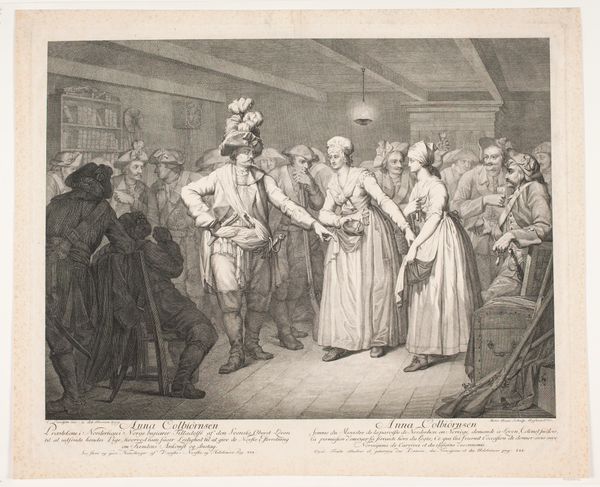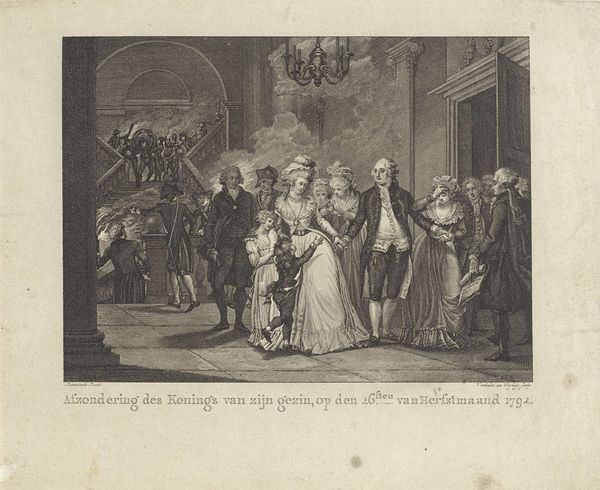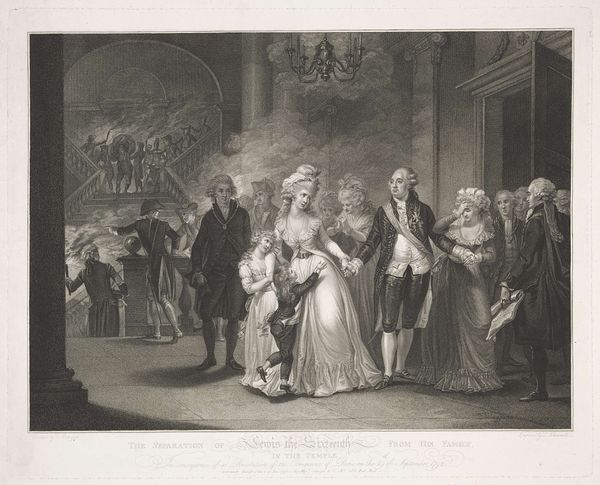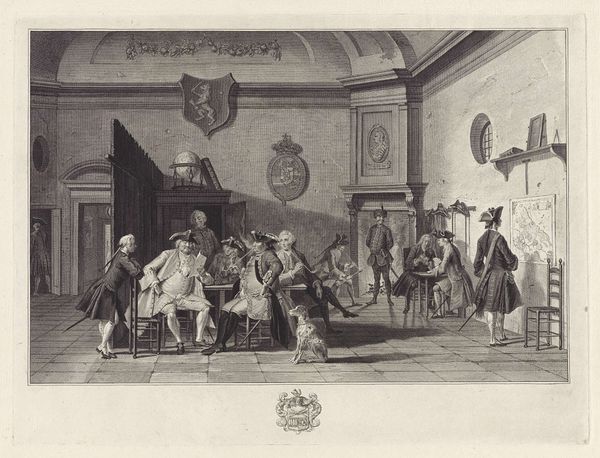
Willem V vereert de helden van de zeeslag bij Doggersbank, 1781 1853 - 1855
0:00
0:00
print, etching, engraving
#
portrait
#
neoclacissism
# print
#
etching
#
old engraving style
#
white palette
#
genre-painting
#
history-painting
#
engraving
Dimensions: height 352 mm, width 528 mm
Copyright: Rijks Museum: Open Domain
Editor: So, this print, “Willem V vereert de helden van de zeeslag bij Doggersbank, 1781,” is from between 1853 and 1855, after the event itself, and the Rijksmuseum attributes it to an anonymous artist. It’s an etching or engraving. I find it striking how much detail they packed into a black and white print. What do you see in this piece, especially considering its creation decades after the event? Curator: From a materialist perspective, I’m drawn to the process of translating a historical event into a reproducible print. The choice of etching and engraving speaks volumes about accessibility and dissemination of information. This wasn't about creating a unique art object, but about mass-producing an image to shape public opinion. Consider the labor involved – the engraver's skill, the printing press, the distribution networks. Who was the intended audience and how did the availability of this print impact their understanding of the Doggersbank battle and Willem V's role? Editor: That’s interesting. I was focused on the ‘heroism’ narrative, but thinking about production changes everything. Were prints like these common forms of propaganda? Curator: Absolutely. Before photography, prints were vital for circulating images and narratives. The crisp lines and detailed rendering lend authority to the scene. What materials were available? Where was it being produced and who was funding the labor and distribution? These elements all suggest a push to cement Willem V’s image during a time when Dutch power was declining. What sort of paper was being employed? Its availability could speak volumes, for example! Editor: I hadn’t thought of it that way. I was initially thinking of it as just a historical record, but it's clearly much more about shaping public memory. Curator: Precisely. This print's value doesn’t lie solely in its aesthetic qualities or historical accuracy but in its function as a tool of power, highlighting the crucial intersection of art, materials, and social context. By examining its production, we unlock insights into the power dynamics of the period. What do you think, knowing all of that? Editor: I am blown away by how examining the "how" and "why" of its making reveals more than simply describing "what" it depicts. Thanks for that deeper insight into how the materials are themselves part of the meaning!
Comments
No comments
Be the first to comment and join the conversation on the ultimate creative platform.

